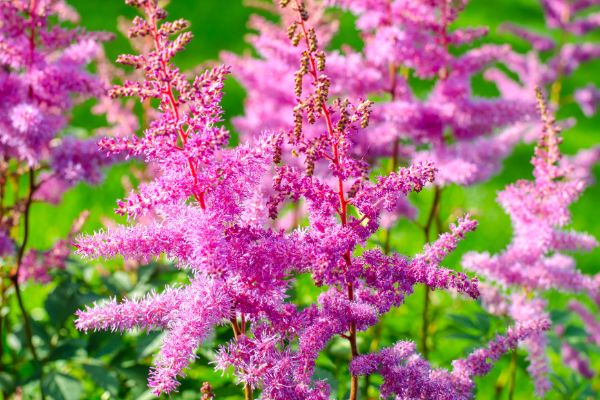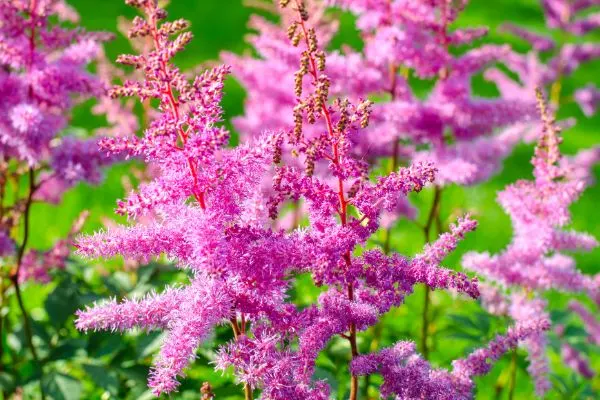Stunning Companion Plants For Indian Pink
Indian pink (Spigelia marilandica) is a beautiful perennial wildflower that is native to the southeastern United States. It is known for its bright red and yellow tubular flowers that bloom in late spring to early summer. Indian pink is a low-maintenance plant that is easy to grow in part shade to shade. It prefers moist, well-drained soil and is tolerant of deer and rabbits.
Indian pink is a great addition to any garden, but it can be even more stunning when planted with companion plants. The right companions can help to highlight the beauty of Indian pink's flowers, extend the bloom time, and attract pollinators.
Here are some of the best companion plants for Indian pink:
- Ferns: Ferns add a graceful, airy touch to any garden, and they make great companions for Indian pink. The delicate fronds of ferns will help to soften the bold red and yellow flowers of Indian pink, and they will also provide some much-needed shade in hot summer months. Some good choices for ferns to plant with Indian pink include maidenhair fern, Christmas fern, and lady fern.

- Hostas: Hostas are another great choice for companion plants for Indian pink. These shade-loving plants come in a wide variety of colors and sizes, so you can find the perfect ones to complement your Indian pink plants. Hostas will also help to suppress weeds and keep the soil moist around your Indian pink plants. Some good choices for hostas to plant with Indian pink include June hosta, gold standard hosta, and blue angel hosta.

- Astilbes: Astilbes are known for their delicate, airy flowers that bloom in late spring to early summer. They make great companions for Indian pink because they have similar growing requirements. Astilbes prefer moist, well-drained soil and partial shade to shade. They are also deer-resistant, so you can rest assured that your plants will be safe from hungry animals. Some good choices for astilbes to plant with Indian pink include white giant astilbe, spirea astilbe, and purple emperor astilbe.

- Butterfly bushes: Butterfly bushes are a great way to attract pollinators to your garden. They are covered in bright, nectar-rich flowers that butterflies and hummingbirds love. Butterfly bushes prefer full sun and well-drained soil. They are relatively drought-tolerant, so they are a good choice for gardens in hot, dry climates. Some good choices for butterfly bushes to plant with Indian pink include orange butterfly bush, purple coneflower, and milkweed.

- Lilies: Lilies are a classic choice for garden flowers. They come in a wide variety of colors and sizes, so you can find the perfect ones to complement your Indian pink plants. Lilies prefer full sun and well-drained soil. They are relatively low-maintenance, but they do require regular watering. Some good choices for lilies to plant with Indian pink include Easter lily, tiger lily, and stargazer lily.

These are just a few of the many great companion plants for Indian pink. By choosing the right companions, you can create a beautiful and thriving garden that will attract pollinators and butterflies for years to come.
Indian pink (Spigelia marilandica) is a beautiful, native perennial that blooms in the summer with bright red, trumpet-shaped flowers. It is a great addition to any garden, but it can be tricky to find companion plants that will complement its bold colors and delicate foliage.
If you are looking for Indian pink companion plants, I recommend visiting Gardenia Inspiration. This website has a comprehensive list of plants that can be grown successfully alongside Indian pink. The list includes plants of all different heights, textures, and colors, so you are sure to find something that will fit your garden's style.
In addition to providing a list of companion plants, Gardenia Inspiration also includes detailed information about each plant, including its growing requirements, sun exposure, and soil type. This information can help you choose the right plants for your garden and ensure that they thrive.
So, if you are looking for beautiful and easy-care Indian pink companion plants, I encourage you to visit Gardenia Inspiration. You won't be disappointed!
FAQ of indian pink companion plants
- What are good companion plants for Indian pink?
Indian pink (Spigelia marilandica) is a native North American perennial that blooms in early summer with showy red and yellow tubular flowers. It prefers partial shade to full shade and moist, well-drained soil. Some good companion plants for Indian pink include:
* Ferns: Ferns provide a delicate and airy backdrop for the bolder flowers of Indian pink. Some good choices include cinnamon fern (Osmunda cinnamomea), interrupted fern (Osmunda claytoniana), and royal fern (Osmunda regalis).
* Hostas: Hostas are another good choice for companion plants for Indian pink. They offer large, glossy leaves that provide a visual contrast to the small, delicate flowers of Indian pink. Some good varieties of hostas to consider include 'June', 'Knightmare', and 'Halcyon'.
* Coral bells (Heuchera): Coral bells are a type of perennial that is known for its colorful foliage. They come in a wide range of colors, including red, pink, orange, and yellow. Coral bells can be planted in front of Indian pink to add a splash of color to the garden.
* Columbine (Aquilegia): Columbine is a spring-blooming perennial that is known for its delicate flowers. The flowers come in a variety of colors, including blue, purple, pink, and white. Columbine can be planted in front of Indian pink to add a touch of elegance to the garden.
* Black-eyed Susan (Rudbeckia hirta): Black-eyed Susan is a summer-blooming perennial that is known for its bright yellow flowers. The flowers have a dark brown center that resembles an eye. Black-eyed Susan can be planted in front of Indian pink to add a pop of color to the garden.
- What are the benefits of planting Indian pink with companion plants?
There are several benefits to planting Indian pink with companion plants. First, companion plants can help to deter pests and diseases. For example, ferns can help to repel aphids, while hostas can help to repel slugs and snails. Second, companion plants can help to improve the soil quality. For example, coral bells can help to add nitrogen to the soil, while columbine can help to improve drainage. Third, companion plants can help to extend the flowering season. For example, black-eyed Susan can help to fill in the garden after Indian pink has finished blooming.
- What are some tips for planting Indian pink with companion plants?
When planting Indian pink with companion plants, there are a few things to keep in mind. First, make sure to choose companion plants that have similar growing requirements. For example, all of the plants listed above prefer partial shade to full shade and moist, well-drained soil. Second, plant the companion plants at the same depth as they were growing in their pots. Third, water the plants thoroughly after planting.
- How far apart should Indian pink and its companion plants be planted?
The distance between Indian pink and its companion plants will depend on the size of the plants. For example, ferns and hostas can be planted 12-18 inches apart, while coral bells and columbine can be planted 6-12 inches apart. Black-eyed Susan can be planted 18-24 inches apart.
- When should Indian pink and its companion plants be watered?
Indian pink and its companion plants should be watered regularly, especially during the first year after planting. Once the plants are established, they can tolerate some drought. Water the plants deeply when you do water them, so that the water reaches the roots.
Image of indian pink companion plants
- Hosta: Hostas are a classic companion plant for Indian pink. They have large, glossy leaves that provide a nice contrast to the Indian pink's red flowers. Hostas also prefer similar growing conditions, such as partial shade and moist soil.
- Ferns: Ferns are another good choice for companion plants for Indian pink. They add a touch of elegance and texture to the garden, and they also prefer partial shade and moist soil.

- Bluebells: Bluebells are a beautiful spring-blooming wildflower that can be paired with Indian pink. They have delicate, bell-shaped flowers that come in shades of blue, purple, and white. Bluebells prefer moist, well-drained soil and full to partial shade.

- Astilbe: Astilbe is a shade-loving perennial that produces fluffy, pink or white flowers in summer. It is a good companion plant for Indian pink because it has similar growing conditions and can help to fill in the space around the Indian pink.

- Lungwort: Lungwort is a woodland perennial that has blue, purple, or white flowers in spring. It is a good companion plant for Indian pink because it prefers similar growing conditions and can help to add some color to the garden in the spring.
Post a Comment for " Stunning Companion Plants For Indian Pink"